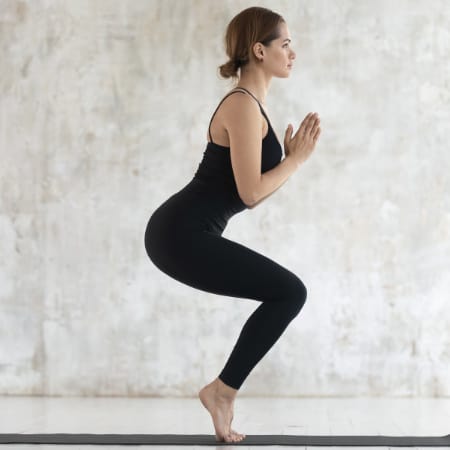Why Yoga Is Important In Modern Life?
Yoga Increases Flexibility. Yoga is widely known for its effect on flexibility. Increased flexibility leads to better mobility and bodies that

yourself, even if you suffer from health issues that could be helped by doing so. Practising yoga can be a great way to slow down and focus on yourself amidst the daily grind. In addition, it can make your life better overall.
The practise of yoga has always been significant. Especially in the West, where the contemplative part was sometimes lost in translation, there is a lot greater appreciation and understanding of moments of stillness and awareness now.
Even inexperienced yogis quickly feel the positive effects of regular practise. Yoga's mental and physical health benefits make it a must for anybody serious about finding inner calm and wholeness.
It’s Great for Relaxation
Long-term yoga practise heightens its benefit. Yoga's long-term impact in the battle against stress has been demonstrated in studies spanning three months and ten weeks.

Regular yoga practitioners often describe increased calmness and serenity in all aspects of their lives. When practised alongside meditation, yoga can be an effective way to de-stress from the pressures of modern life.
Even a brief session of yoga can reduce cortisol levels. Making this an established part of your routine can improve your health and happiness in the long run.
Yoga Helps with Anxiety
Stresses in modern life contribute to the epidemic prevalence of anxiety disorders. The stress hormone cortisol contributes to the negative outcomes of anxiety. Repeated yoga practise has been demonstrated to reduce anxiety and increase well-being for people struggling with this condition.

Yoga Increases Strength
Different branches of yoga emphasise different techniques, yet all of them provide some strength training. Practising yoga often entails using all of your muscle groups. Yoga's emphasis on strength training has made it a mainstream component of health and wellness programmes worldwide.

You'll feel better about yourself and develop a more positive view on exercise in general as a result of participating in this activity. In contrast to other forms of training, yoga really improves strength by increasing flexibility. Bone health is also improved by this.
Low plank pose (Chaturanga Dandasana):for back, wrists, and arms;
- Half-moon pose (Ardha Chandrasana): for legs and ankles;
- Locust pose (Salabhasana): for arms, legs, parts of the torso;
- Downward-facing dog pose (Adho Mukha Shvanasana): for legs and arms;
- Warrior II pose (Virabhadrasana II ): for shoulders, glutes, outer hips, thighs;
- Chair pose (Utkatasana): for thighs, knees, ankles;
- Cobra pose (Bhujangasana): for core, back, glutes, arms.
Yoga Increases Flexibility
The flexibility-boosting benefits of yoga are well-known. Everyone, not just athletes, can benefit from greater flexibility because it improves mobility and bodily performance. Studies have shown that regular yoga practise, even if only for fifteen minutes a day, can have a significant impact on mobility. The benefits of improved mobility extend throughout the whole body since stiff joints and muscles can be unlocked and loosened up.
If you want to improve your flexibility through yoga, you should pay special attention to the following types of poses:
It Makes You More Focused
Meditation, often in the form of either mindfulness or mantra practises, is an integral part of the yoga routine. This silent, mantra-based method can help you find your centre. The objective of this technique is to get you to ignore external stimuli and concentrate on your own internal experience of being alive right now.
Regular use of this method appears to be the driving force underlying noticeable improvements in concentration. The practise of yoga, which emphasises introspection and the elimination of external distractions, has been linked to significant improvements in problem-solving skills. One long-term benefit of meditation is that it can help you learn to control mental chaos.
Breathing in a regular pattern is another yoga focus. Even outside of yoga, being able to regulate your breathing can help you focus on the activities at hand.
Yoga Helps You Sleep Better
Yoga has been shown to improve sleep quality when practised regularly. Restorative, Yoga Nidra, and Kripalu yoga are all examples of gentle forms of the practise that emphasise relaxation and can help slow your heart rate and bring on a sense of peace.
It Can Help with Migraines
Migraine headaches can have a variety of causes, not all of which are ever identified. Even though migraines can't always be prevented, yoga has been shown to reduce their severity and duration. It can help prevent them by lowering stress, tension, and high blood pressure, all known risk factors.

Pranayama is the yoga practise of regulating breath. This method is typically employed in order to achieve a state of perfect harmony between one's breathing and one's yoga positions. Pranayama is not only useful for relieving stress and anxiety, but also for relieving the agony of migraines. Pranayama can help you relax while keeping the discomfort in the background by controlling your breathing.
In addition to improving circulation and relaxing tight muscles, yoga has many other health benefits. A migraine's severity may be lessened by doing this. Yoga, in contrast to several other forms of exercise, will not aggravate a migraine. This appears to be due to the fact that yoga is so harmonic and helps the body regain its equilibrium without putting undue strain on it.













